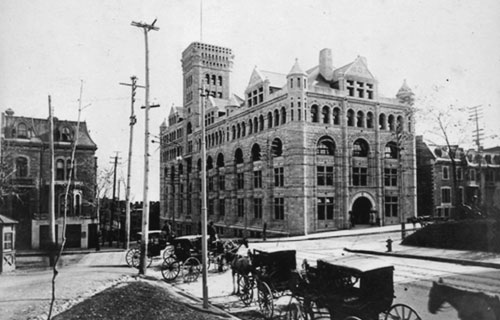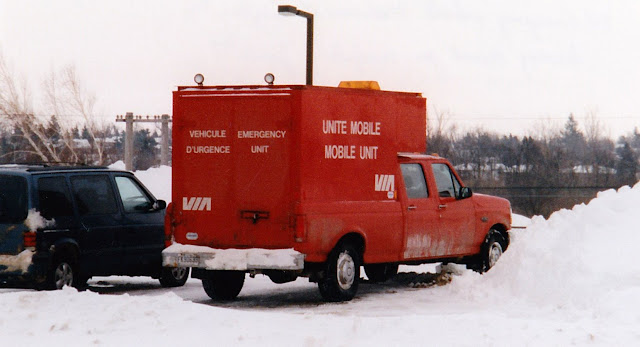Federal Transport Minister Marc Garneau made space in his schedule to shuttle from Ottawa to Montreal and make an out-of-this-world announcement. A large banner proclaimed 'VIA RAIL CANADA IS BACK' and podium proclaimed 'COMING BACK TO MONTREAL'. Nearby were VIA executives like Gino Vannelli-Siciliano at right, and workers from the Montreal Maintenance Centre like carman Sonny Lamatina (far right) and his somnolent French-speaking brother, Jack (far left). 

The long-rumoured return of the cross-Canada Canadian to Canadian Pacific tracks was announced to cheers from all present. Freight delays on CN, and the opportunity to return service to larger cities were cited as two reasons for the switch. CP is said to be receptive, due to the minimal interuption its quiet tracks see from any vestige of strong freight traffic. So CP is rolling out the welcome mat to VIA. Britain's NetNewsLedger recently revealed that VIA has secretly stored equipment in a Thunder Bay park for the eventual return of the service (link). Ready to go at a moment's notice should service someday resume. Well, it's go-time!
You just cannot write this stuff! But then the problems started...
Contractors were hired to make changes to Windsor Station for the new service. Once the station of origin for the Canadian out of Montreal, VIA's switch to Central Station rendered Windsor Station redundant, becoming part of the Bell Centre. Anyway, the contractors went to the wrong Windsor.
They went to Windsor, Ontario! Before stunned VIA officials realized what was happening, VIA's Windsor [Ontario!!] station had been demolished and the rubble was being hosed, much like VIA has been by CN! They could do nothing but stand by, mouths agape and stare blankly (above).
No problem, it was already spring, so passengers could wait outside in Windsor (above). Problem solved. Meanwhile, in Montreal, some local historical re-enactors borrowed some horses and buggies and had some monochrome photos taken outside Windsor Station (below) to celebrate the return of transcontinental service to Montreal, and the resurgence of cross-Canada travel in La Belle Province. Looks old-timey, doesn't it?
Soon, domes and stainless steel would once again be seen in downtown Montreal, arriving from the west. VIA released the following artist's rendering of the new service. It shows second-hand equipment purchased for the restored service posed at the proposed rebuilt Windsor Station..in Montreal! The equipment will wear CP Rail Action Red as part of a VIA Heritage Train program to celebrate VIA's 40th anniversary in 2018. VIA will apparently stop at nothing to make this new service a success! Augmenting the second-hand trains, new trains will be produced by Rapido Trains' new factory in its first-ever 1:1 museum-quality project. The equipment will be a pre-order limited edition, and since it involves new tooling, will not be available until the spring of 2025. But VIA officials have been assured that the under-body detail will be amazing. To ensure strong sales, Rapido will also be producing the equipment in six different New Haven RR schemes for commuter agencies in the U.S. Northeast.
In other news, the High Speed Rail renaissance in the Corridor is set to begin. Preparations are being made in soon-to-be-online communities like Sharbot Lake for the northerly alignment of the intercity, 200km/h bullet train. With a nod to Japan's bullet train, the ShinKanSen, VIA's high-speed service has been tentatively titled the ShurKanSpen. I've already Google-mapped my awesome trainwatching spot in Sharbot Lake. Should be ready in a couple of months. Or decades. Whoooosh!:
Running extra...
Comment moderation temporarily enabled. Getting 150 fake comments a day from India. Forget about Russians hacking. India is bombing our blogs and tying up our phone lines with duct cleaning dudes.
I recently read a warning about a canned cooked meat product. Full of pork and spices, it's already spread to over 100 countries.. Comes in a can. If you come across it, don't open it. It's Spam.























































